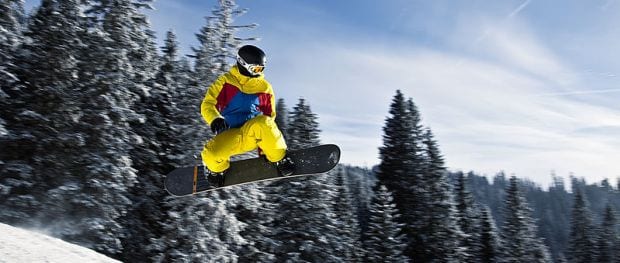Wear the helmet anyway
Helmets continue to be recommended or required by multiple ski resorts worldwide. The main thinking is that prevention of traumatic causes of death will directly reduce mortality from avalanches and other alpine trauma. That being said, the authors of this study wanted to see if perhaps wearing a helmet also slowed progression of hypothermia by nature of insulating the head.
It makes sense. We are taught starting in grade school that most heat is lost from the head. Since we now know this statement by itself isn’t true, you move on to the real meaning of the statement, which is: you lose most of your heat through any part of the body that is uncovered. Thus, if you wore a hat but no pants, you would lose most of your heat through your legs. See how fun this is?
So the theory behind covering the only part of your body left uncovered while skiing isn’t too far out there. But does it slow cooling of simulated avalanche victims or not? Of note, their secondary hypothesis was how closely the temperatures between 3 different probes (esophageal, capsule, and rectal) would correlate.
Unfortunately, this study can’t tell us the answer to the first question. Their power calculation required 11, they only got 9 participants, and only used data from 7. 1 declined to be buried a second time for the control, and another had a poorly functioning temperature probe, and apparently could not swallow the esophageal probe, limiting data collection.
While their data does not show a significant difference in temperature between insulated participants and those without, there are possible confounding variables. Most people who aren’t sedated will hold their head off the snow, creating an air pocket of insulation. This is likely the reason for the difference between this study and an earlier one using water, as you can’t keep a submerged head out of contact with water. Also, they still had a Gore-Tex hood protecting their head from snowmelt, likely also reducing heat loss. The participants without helmets subjectively rated their experience as “colder”, for what it’s worth. Let’s not kid ourselves though. Nobody advocates using helmets solely for thermal insulation.
The good news is that the three different probes did correlate in temperature as far as rate of change. The absolute values of temperature were different enough that there still needs to be further work towards finding the ideal method of measuring temperature. But since we aren’t using the gold standard of pulmonary artery temperatures, we might as well stop (or significantly reduce) doing rectal and esophageal probes, as the discomfort of these likely reduces study participants. As capsules become more reliable, expect them to become the overwhelming favorite for future temperature studies.
McIntosh SE et al. Effect of head and face insulation on cooling rate during snow burial. Wilderness Environ Med. 2015 Mar;26(1):21-8 [PMID 25281588]
Further Reading
- Pretorius T, Cahill F, Kocay S, Giesbrecht GG. Shivering Heat Production and Core Cooling During Head-In and Head-Out Immersion in 17°C Water. Aviat Space Environ Med. 2008 May;79(5):495-9. [PMID 18500046]
- Hensley J. Predicting survival after avalanches. EBM Gone Wild
- Hensley J. Does that avalanche airbag really help? EBM Gone Wild
- Hensley J. Do air pockets help avalanche survival? EBM Gone Wild
- Hensley J. Do ski helmets cause risk compensation?. EBM Gone Wild
- Hensley J. Treating serious frostbite. EBM Gone Wild

EBM Gone Wild
Wilderness Medicine
Emergency physician with interests in wilderness and prehospital medicine. Medical Director of the Texas State Aquarium, Padre Island National Seashore, Robstown EMS, and Code 3 ER | EBM gone Wild | @EBMGoneWild |

